Let’s say you’re hoping to create a registration form that allows someone to register multiple people, but you’d rather not display 10 different name fields in case some respondents are only registering one person. Have no fear—this is a super common request and totally doable!
This set-up can actually apply to a number of different use cases, including order forms and invitations, but is most often used for registration forms. A webinar coordinator might use it to allow people to enter multiple attendees’ info, while a camp might use it to allow parents/guardians to register multiple kids at once.
Whatever the scenario, we have two recommended ways to create this type of set-up using some good old fashioned Rules. For the sake of this walk-through, we’ll stick with the example of a registration form that needs the ability to accept multiple attendees—but remember, this can apply to many different types of forms!
Method 1: The Field Rule Approach
Field Rules allow you to show additional fields based on the number of attendees being registered.
To get started with this, we’ll add a Dropdown or a Multiple Choice Field to your form, and add the choices 1, 2, 3, and so on, depending on how many people could be registered in a single form submission. This field will be used to ask how many attendees are being registered. Here’s what that will look like:
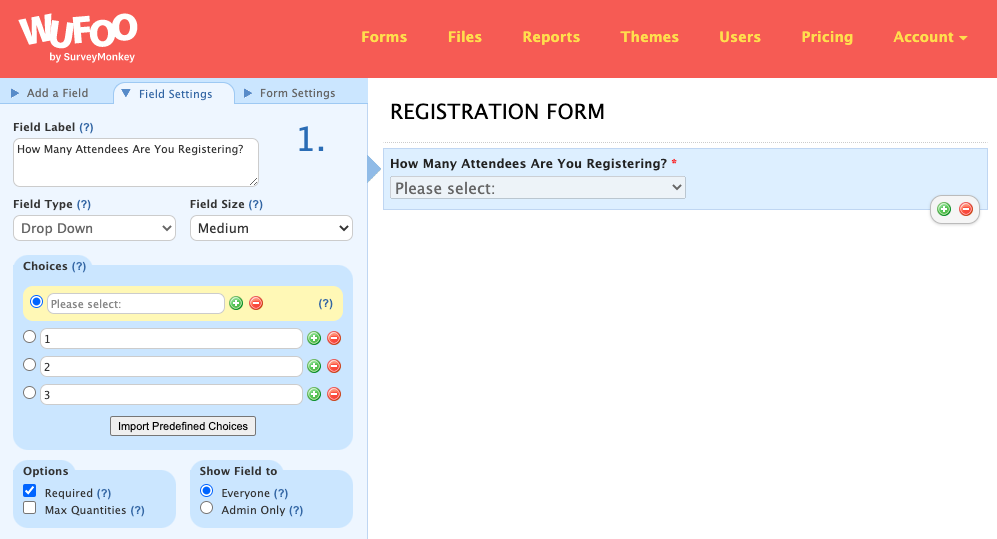
Now that you have that initial field to ask how many attendees are being registered, we’ll add in fields for each attendee. In this example, we’re creating a form that is set up to allow someone to register up to 3 people, so we’ll add in a name and email field for three attendees. Don’t worry if you want your form to accept more than 3—you’ll just follow the same structure to add additional fields!
Here’s what we have once the fields for those attendees have been added:
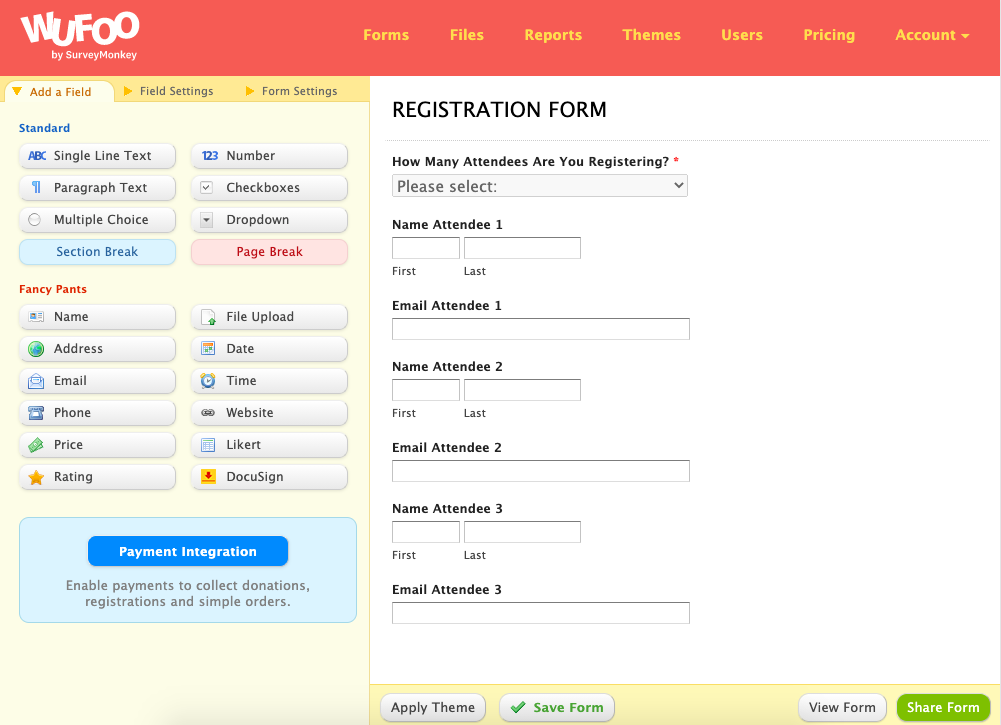
Now this is where the fun comes in! It’s time to add the Field Rules, so that we only display the name and email fields for the number of attendees being registered. This way, if someone is only registering 1 person, the attendee 2 and attendee 3 fields will remain hidden. To add our Field Rules, click the “Field Settings” tab, then “Add Branching & Logic.” Or hop back to the Form Manager, and click the “More” icon, then “Form Rules” to reach the Rule Builder.
From the Rule Builder, under Field Rules, we’ll go ahead and add a rule so that the “Name Attendee 1” field shows up if 1, 2, or 3 attendees are being registered. Here’s what that looks like:
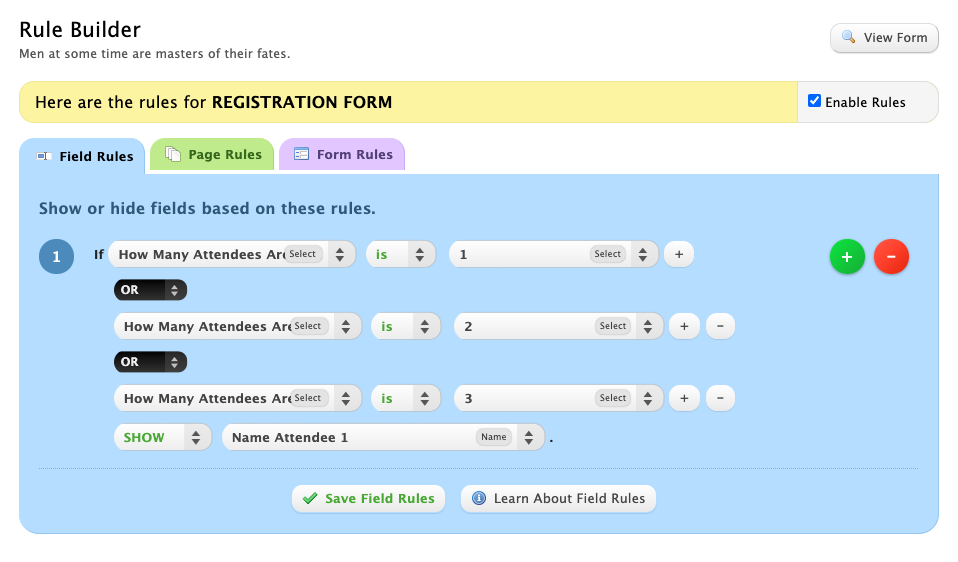
Now that we have that set up, we’ll also need a Field Rule to show the “Name Attendee 2” field. We want this “Name Attendee 2” field to show up only if 2 or 3 attendees are being registered. To make this work, we’ll add a new rule:
If “How Many Attendees Are You Registering?” is 2
OR
If “How Many Attendees Are You Registering?” is 3
SHOW “Name Attendee 2”
Lastly, we’ll create a rule to show the “Name Attendee 3” field if there are 3 attendees being registered. Here’s that rule:
If “How Many Attendees Are You Registering?” is 3
SHOW “Name Attendee 3”
Again, if you have more than 3 attendees, you’ll use this same structure. If you’re struggling with these rules, the best approach is to start with that 1st name field. This field should show up if 1, 2, 3, or more attendees are being registered. Then, the 2nd attendee name field should only show if 2 or more attendees are being registered. The 3rd attendee name should only show if 3 or more attendees are being registered, and so on and so forth.
Woohoo! Here’s what our rules for a 3-attendee form should look like at this point:
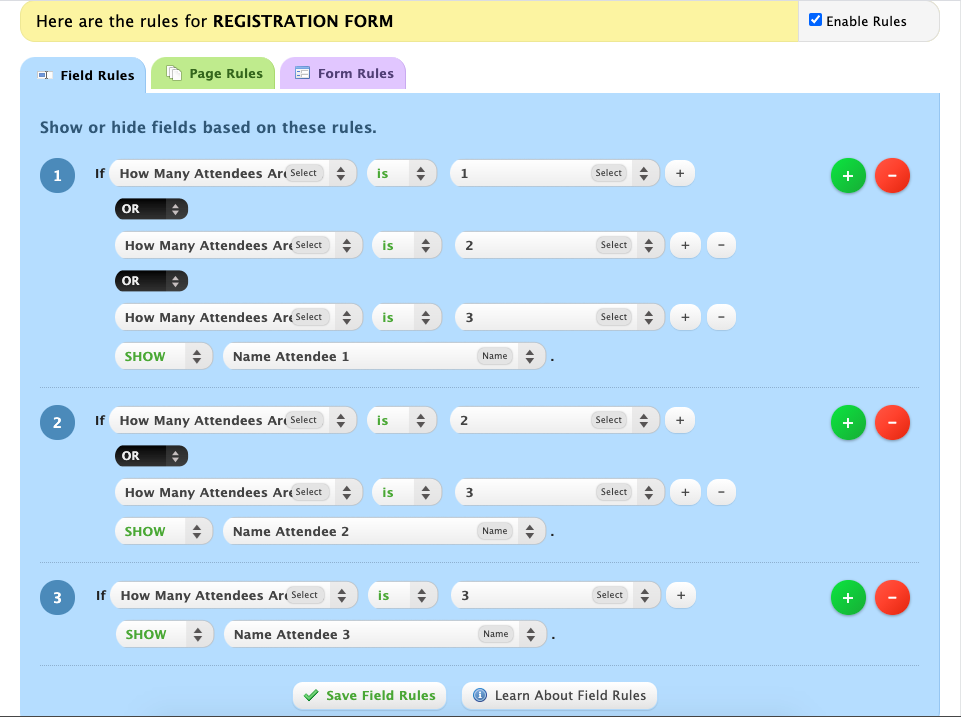
Now, just repeat that same exact process for the attendee email fields, and you’re good to go!
Once all your rules are added, test this out to see your work in action. Your form should show the correct number of attendee name and email fields, based on the number selected from that initial dropdown field.
Method 2: The Page Rule Approach
This option is especially handy if you have quite a few fields for each attendee and would hit the 50 Field Rule limit using method 1, or if you prefer the look of a multi-page form!
With this option, you’ll add a new page for each attendee that can be registered. Individuals that are only registering one attendee will fill out the first page and then head on to the confirmation page, whereas those registering additional attendees will continue on to additional pages to enter more information.
The first step to creating this form, is to add the fields for as many attendees as you’d like someone to be able to register. Once you’ve added Name Fields, Email Fields, etc. for the number of possible attendees, we’ll add in a Page Break between each group of fields. Here’s what that will end up looking like:
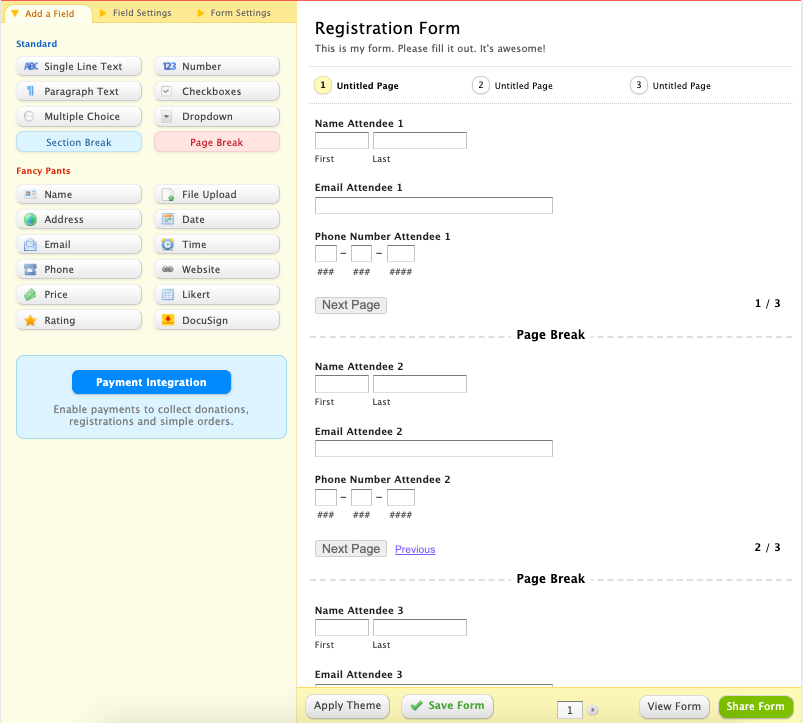
Now that we have all of our attendee-related fields and Page Breaks, we’ll add a Multiple Choice Field to the end of each page. This field will ask the respondent if they would like to register another individual, with “Yes” or “No” answer choices.
Here’s what we have at this point:
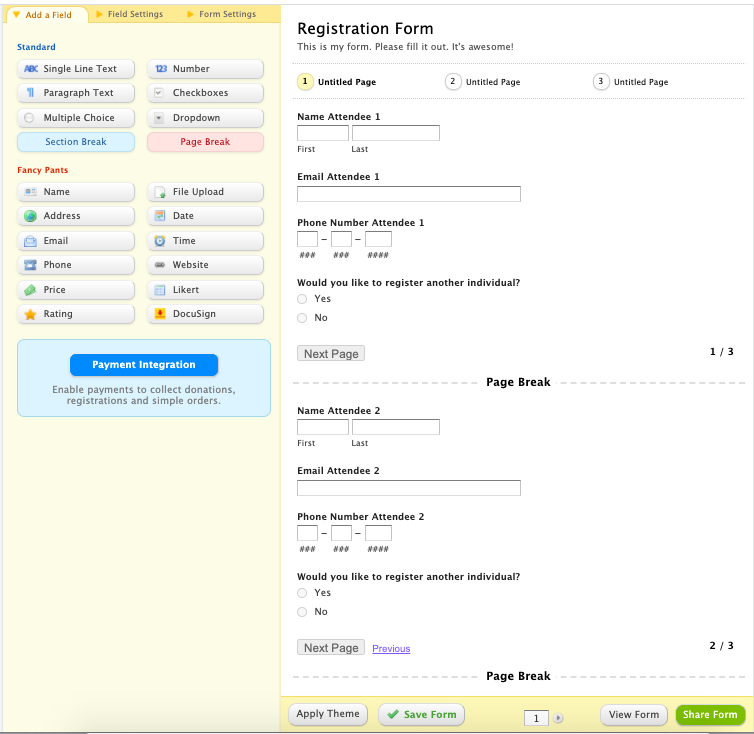
Once that Multiple Choice field has been added at the end of each page, we’re ready to add our Page Rules! These Page Rules will ensure that only those that select “Yes” to the question “Would you like to register another individual?” are sent to the next page. If “No” is selected, we don’t want the individual to see the other pages, since they don’t need to register additional attendees.
Click the “Field Settings” tab, then “Add Branching & Logic,” or hop back to the Form Manager and click the “More” icon, then “Form Rules” to reach the Rule Builder. From there, select the “Page Rule” tab.
Here we’ll add a rule as follows:
If “Would you like to register another individual” (field on page 1) is “No”
SKIP to Confirmation Page
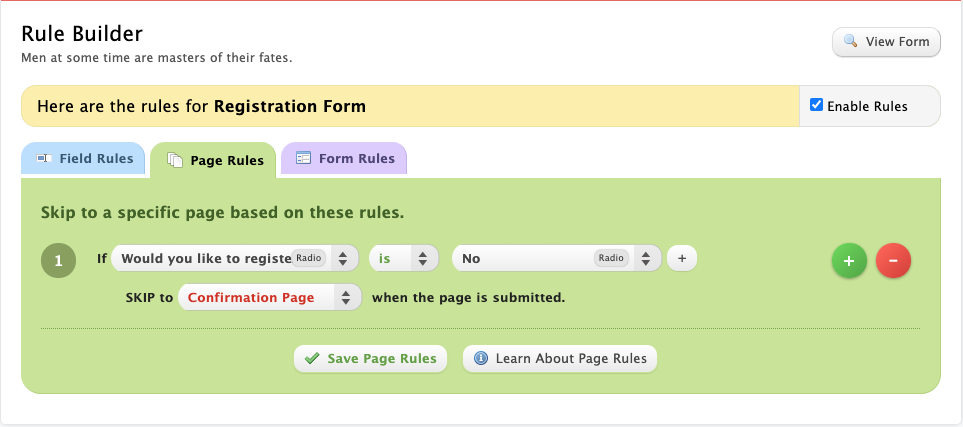
This Page Rule ensures that if the respondent doesn’t have an additional attendee to register, they’ll be routed right to the Confirmation Page after filling out page 1. If the respondent chooses “Yes” in the “Would you like to register another individual?” field, by default they’ll be routed to the 2nd page of the form to enter info about attendee 2. We don’t need an additional Page Rule for this, since the default is to send respondents from one page to the next. We only need a rule if we’re skipping respondents over a page(s) or on to the Confirmation Page.
Now we’ll set up the same type of Page Rule for the other pages. If someone answers “No” to the ‘‘Would you like to register another individual?” field on page 2, they will be skipped over the next pages and onto the Confirmation Page. If someone responds “No” to the ‘‘Would you like to register another individual?” field on page 3, the same thing will occur. Repeat this for each of your pages.
Once you’re done, you should have a Page Rule for each of the different “Would you like to register another individual?” fields. Then it’s time to test, test, test!

Comments
Everyone needs a hug.
Posted December 2nd, 2020 by badminton rules.Thank you for this helpful advice
Posted December 2nd, 2020 by Candycrush-saga.